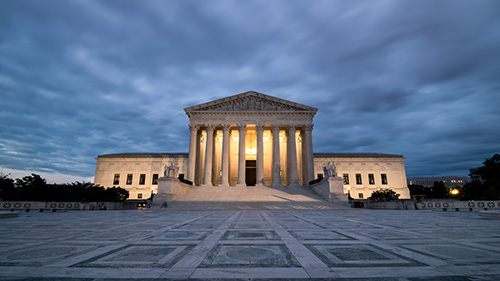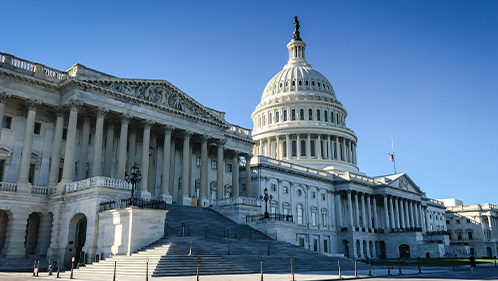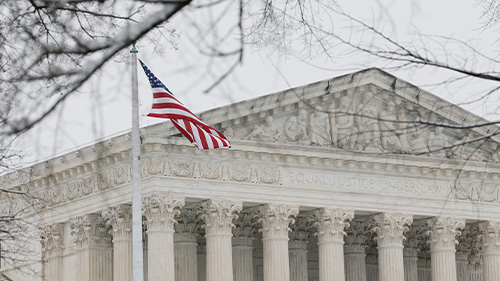From the Courtroom to the Classroom: Teaching Supreme Court Cases in AP U.S. History
One of the personal stories I frequently share with my students is how I nearly became a lawyer. I majored in political science and philosophy in...
AP & Honors Mathematics
Explore Wiley titles to support both AP and Honors mathematics instruction.
Literacy Skills & Intensive Reading
Connections: Reading – Grades 6–12
Empower student success with a proven intensive reading program that develops strong reading skills in striving readers.
Drama, Speech & Debate
Basic Drama Projects 10th Edition
Build students’ confidence and competence with comprehensive, project-based theatre instruction.
Literature
Connections: Literature
Support learners as they study dynamic, relevant texts and bring the richness of diverse voices to students through literature.
Literature & Thought
Develop critical thinking, reading, and writing across literacy themes, genres, historical eras, and current events.
Language Arts
Vocabu-Lit® – Grades 6–12
Help students build word power using high-quality contemporary and classic literature, nonfiction, essays, and more.
Connections: Writing & Language
Help students develop grammar, usage, mechanics, vocabulary, spelling, and writing and editing skills.
Reading/English Language Arts
Measuring Up to the English Language Arts Standards
Incorporate standards-driven teaching strategies to complement your ELA curriculum.
English Language Learners
Measuring Up for English Language Learners
Incorporate research-based best practices for ELLs with an approach that includes a focus on language acquisition strategies.
Mathematics
Measuring Up to the Mathematics Standards
Incorporate standards-driven teaching strategies to complement your mathematics curriculum.
Foundations
Measuring Up Foundations
Help students master foundational math skills that are critical for students to find academic success.
Science
Measuring Up to the Next Generation Science Standards
Give students comprehensive NGSS coverage while targeting instruction and providing rigorous standards practice.
Assessment
Measuring Up Live
Deliver innovative assessment and practice technology designed to offer data-driven instructional support.
For a better website experience, please confirm you are in:
I can’t believe it’s time to start reviewing for the AP® United States Government & Politics Exam. This year has absolutely flown! Thankfully, my district has been in-person all year so I feel that my students are much more prepared than last year. However, time spent reviewing is always valuable. Keep reading to find out how I plan to review content and multiple-choice skills with my students, as well as how I will use the AP® United States Government & Politics coursebook by AMSCO® to do this.
In my experience, the best way to review for the AP Gov exam (or any exam really) is to simulate an exam experience. This can be difficult depending on how much class time you have to devote to review, but luckily the AP United States Government & Politics coursebook by AMSCO includes a full length practice exam that addresses all multiple-choice question types students should expect to see on the test.
This allows you to administer the test in-class (time permitting), or assign it as homework. AP students are a bit notorious for worrying over the correct answers rather than appreciating the learning experience, so to combat this I do not take the practice test for a grade. I stress that this is just a way to assess what they know and a tool to help us decide how to spend our review time. I also encourage them to record their time on the first practice exam to give them an idea of how much time they will need on exam day and whether they need to speed up their practice. I give or assign this practice exam the first day of review so that we can use it to inform the rest of our time together leading up to the exam.
After scoring the multiple-choice portion of their practice test, I compile the most commonly missed questions to review with the class. I take this opportunity to address not only the most missed questions, but also the most commonly chosen incorrect answers to figure out why those questions were the most missed and tailor my reteaching to their specific needs.
The data provided by the multiple-choice questions on the practice exam also allows students to drill down on their own specific needs for review. The keys provided in the teacher resource have been super helpful to my students this year because not only do they give the correct answers, but they also link to learning objectives from the College Board® and specific page numbers in the coursebook students can reference to find more information. From this, students can discern which specific topics they are deficient in and seek out review in those areas, rather than spending time reviewing content they have already mastered. I love to direct students back to the chapter and unit review questions within the AMSCO coursebook as practice since they mirror the exam so well! You could also consider grouping students based on their most commonly missed questions so they can support each other with content.
Sometimes content isn’t the biggest issue for students. The varying multiple-choice question types can cause some to stumble too. Because the practice exam in the AP United States Government & Politics coursebook by AMSCO is comprehensive of all question types, students can also identify which ones they struggle with and seek out further practice for them.
Check out the included lesson plan on how to use the AMSCO coursebook practice exam in your class.
Let me know how it went in the comments!
Paula Franklin teaches AP® US Government and Politics at West High School in Knoxville, Tennessee. She has been teaching the course for nine years and has served as an AP® Reader, table leader, and early table leader at the AP® US Government and Politics Reading over the past five years. She has a B.A. in Political Science and an M.S. in Theory and Practice in Teacher Education from the University of Tennessee, and an Ed.S. in Instructional Leadership from Lincoln Memorial University. Paula is a 2017 Milken Educator, a Lowell Milken Center for Unsung Heroes Fellow, an AP® US Government and Politics Mentor, and a member of the iCivics Educator Network.

One of the personal stories I frequently share with my students is how I nearly became a lawyer. I majored in political science and philosophy in...

Discover how simulations can enhance learning in AP® U.S. Government and Politics. Engage students with hands-on activities like discretionary...

In 2015, the College Board introduced several changes to the AP U.S. History course and exam. One significant addition was the inclusion of new...

One of the things that I spent most of my time thinking about, when the redesigned AP U.S. History course went into effect, was how to deal with the...

Period 7 in the AP U.S. History curriculum is one of the most extensive, spanning from 1890 to 1945. This era begins with debates over imperialism...

New York Times bestselling author Ruta Sepetys chats with Stephanie Nugent about how to use her new book Unveiling You: The Story to help your...

The argumentative essay question on the AP U.S. Government and Politics exam demands a synthesis of content knowledge, analytical skill, and...

As you know in our study of the AP ® U.S. Government, there are nine Foundational Documents. But one of these towers among the rest: the U.S....

Though the College Board’s AP® United States Government and Politics FRQs #3 and #4 may be more involved and seem more challenging, FRQ #1 and #2 can...
.jpg)
Happy Halloween week! For those wanting to sprinkle a little Halloween spirit into the classroom this week, the attached lesson plan uses the novel ...

When it comes to assessments in English classrooms, many teachers fall in the routine of short answer questions, multiple choice questions, and...

Student writers—especially reluctant ones—often struggle with choosing the most fitting words to create an appropriate tone or mood in their writing....

